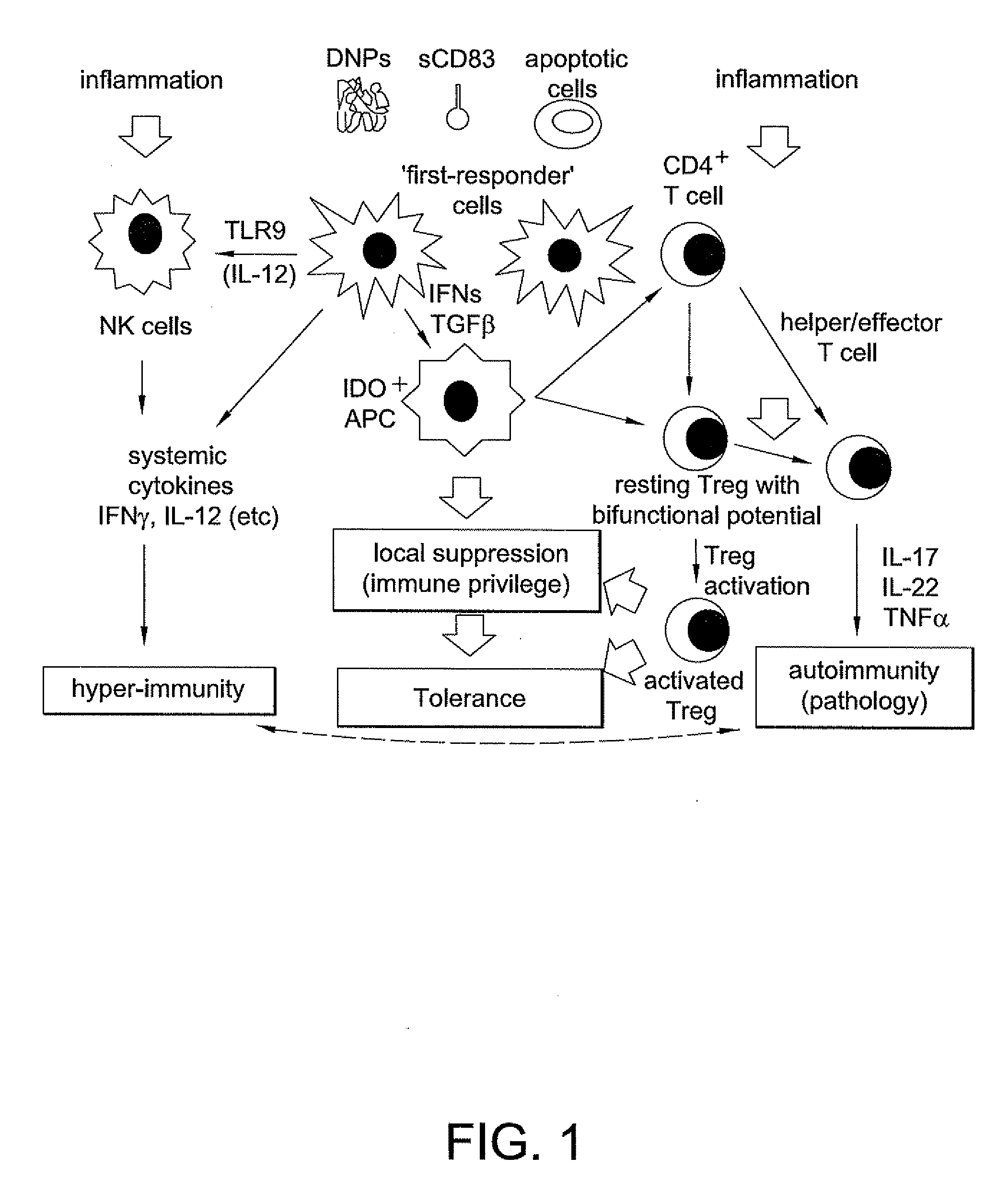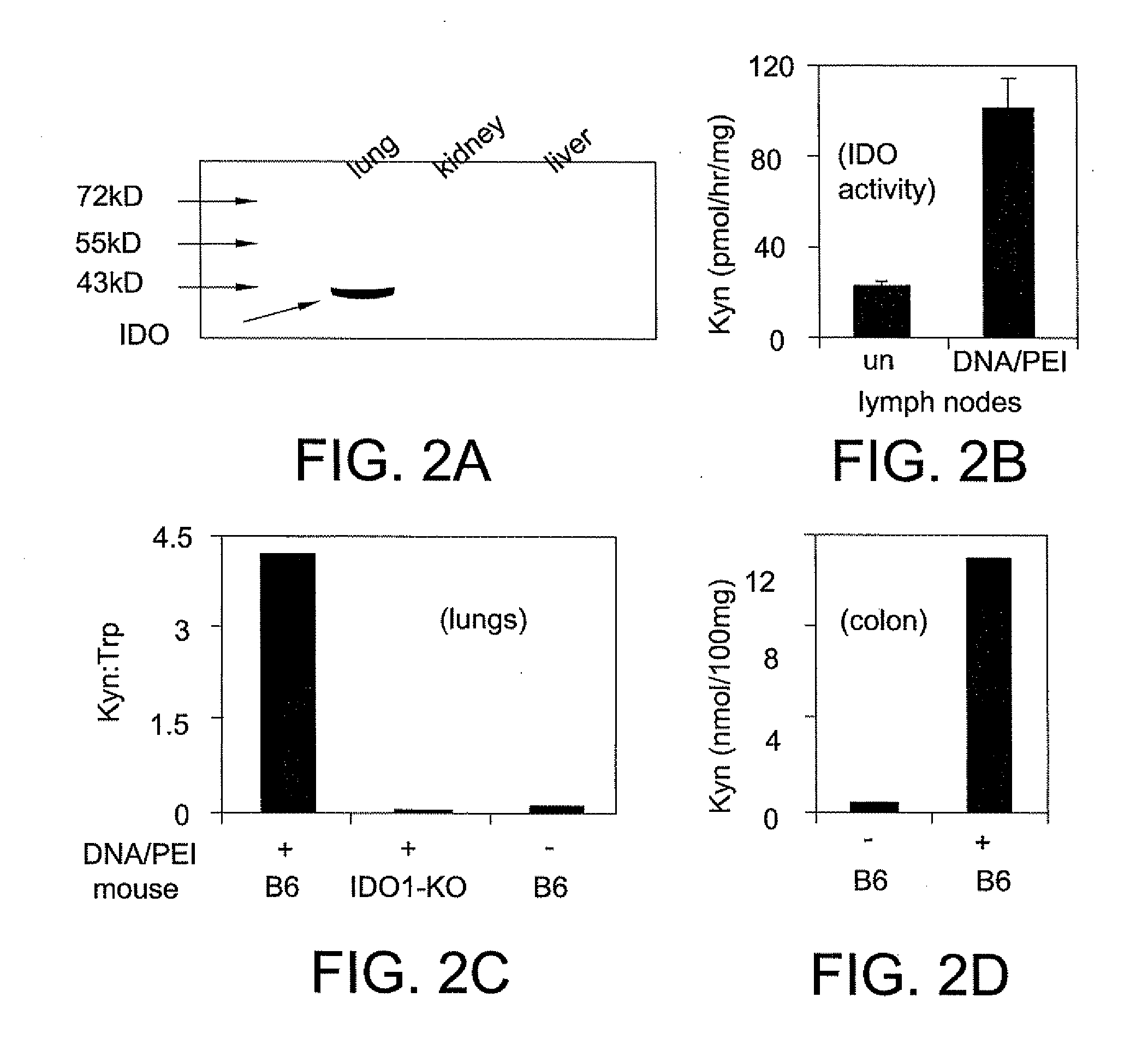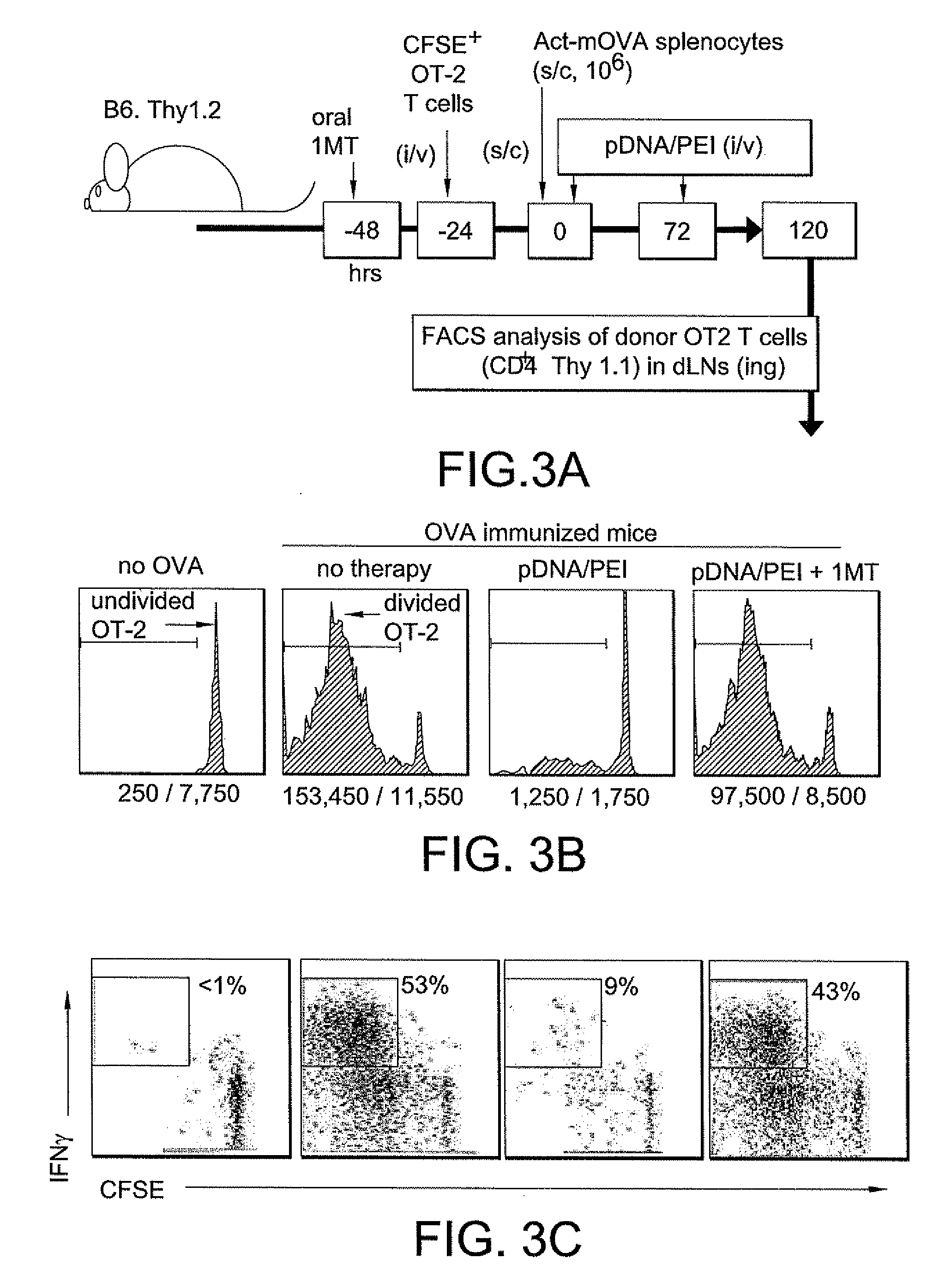Methods of Promoting Immune Tolerance
a technology of immune tolerance and composition, applied in the field of immune tolerance promotion, can solve the problems of insufficient treatment, potential toxic side effects, and most autoimmune diseases that do not have cures, and achieve the effects of reducing systemic side effects, and inhibiting or reducing immune cell responses
- Summary
- Abstract
- Description
- Claims
- Application Information
AI Technical Summary
Benefits of technology
Problems solved by technology
Method used
Image
Examples
example 1
pDNA / PEI Nanoparticles Induce Rapid IDO Expression in Mice
Materials and Methods
[0202]Mice
[0203]All mice were bred in a specific pathogen-free facility and the local (GHSU) Institutional Animal Care and Use Committee approved all procedures involving mice. A1, OT-1, and OT-2 TCR transgenic mice used in suppression assays were described previously (Baban, et al., J Immunol, 187: (2011)).
[0204]DNA / PEI Treatment
[0205]Bacteria plasmid (pEGFPN1, invitrogen) DNA (pDNA) was prepared using an endotoxin-free Kit (QIAGEN), CpGfree pDNA (pGIANT) and poly dA:dT (pAT) were purchased from Invivogen, invivo-JetPEI™ was purchased from Polyplus through VWR. DNA-PEI nanoparticles were prepared according to manufacturer's instructions. Mice were injected with 30 μg of DNA complexed with PEI at N:P ratio 10:1 via tail veins.
[0206]Immunohistochemistry
[0207]Tissue sections (5 μm) were prepared from formalin-fixed paraffinembedded tissues, and subjected to antigen retrieval (Dako Target Retrieval solution,...
example 2
Therapy with pDNA / PEI Nanoparticles Suppresses T Cell Responses Elicited In Vivo
Materials and Methods
[0209]In Vivo Suppression Assays
[0210]CFSE-labeled OVA-specific T cells from OT-1 or OT-2 donor mice were injected (i / v) into recipient B6 mice at least 1 day before immunization. CFSE labeling was performed by incubating MACS-enriched splenic CD8+ (OT-1) or CD4+ (OT-2) T cells at ˜10×106 cells / ml in PBS with 2 μM CFSE at 37° C. for 15 mins Cells were washed in PBS and injected into recipients (i / v). Mice were then immunized with 106 erythrocyte-free spleen cells from Act-mOVA transgenic mice (s / c), and treated with pDNA / PEI nanoparticles and oral 1MT as indicated in FIG. 3.
[0211]Statistical Analysis
[0212]All statistical analysis were performed with unpaired Student's t test using Graphpad Prism.
Results
[0213]When induced to express IDO DCs acquired potent regulatory phenotypes that inhibited proinflammatory cytokine expression, suppressed effector T cell responses and activated Tregs...
example 3
pDNA / PEI Treatment Induces DCs and Tregs to Acquire Regulatory Phenotypes Via IDO
Materials and Methods
Analytical Flow Cytometry
[0214]Cells were stained with the following antibodies; anti-CD4 (clone RM4-5), anti-Thy1.1 (clone OX-7), anti-NK1.1 (clone PK136), anti-CD49b (clone DX5), anti-IFNγ (clone XMG1.2) from Pharmingen-BD-Biosciences (San Jose, Calif.), and analyzed using a LSR2 flow cytometer (Becton-Dickinson). CFSE was purchased from Invitrogen. For detecting intracellular IFNγ, cells were surface stained with anti-NK1.1 and anti-DX5, fixed with cytofix / cytoperm, washed with Perm / Wash solution (BD Bioscience) and stained with anti-IFNγ. Some cells were incubated in RPMI with 1 μM of brefeldin (BD Bioscience) for 3 hrs. with no further stimulations to accumulate cytokine before staining. For detecting IFNγ in OT-2 T cells, dLN cells were stimulated with PMA / ionomycin for 2 hrs. with brefeldin. Cells were then surface stained with anti-CD4, anti-Thy1.1 followed by intracellular ...
PUM
| Property | Measurement | Unit |
|---|---|---|
| diameter | aaaaa | aaaaa |
| diameter | aaaaa | aaaaa |
| aerodynamic diameter | aaaaa | aaaaa |
Abstract
Description
Claims
Application Information
 Login to View More
Login to View More - R&D
- Intellectual Property
- Life Sciences
- Materials
- Tech Scout
- Unparalleled Data Quality
- Higher Quality Content
- 60% Fewer Hallucinations
Browse by: Latest US Patents, China's latest patents, Technical Efficacy Thesaurus, Application Domain, Technology Topic, Popular Technical Reports.
© 2025 PatSnap. All rights reserved.Legal|Privacy policy|Modern Slavery Act Transparency Statement|Sitemap|About US| Contact US: help@patsnap.com



